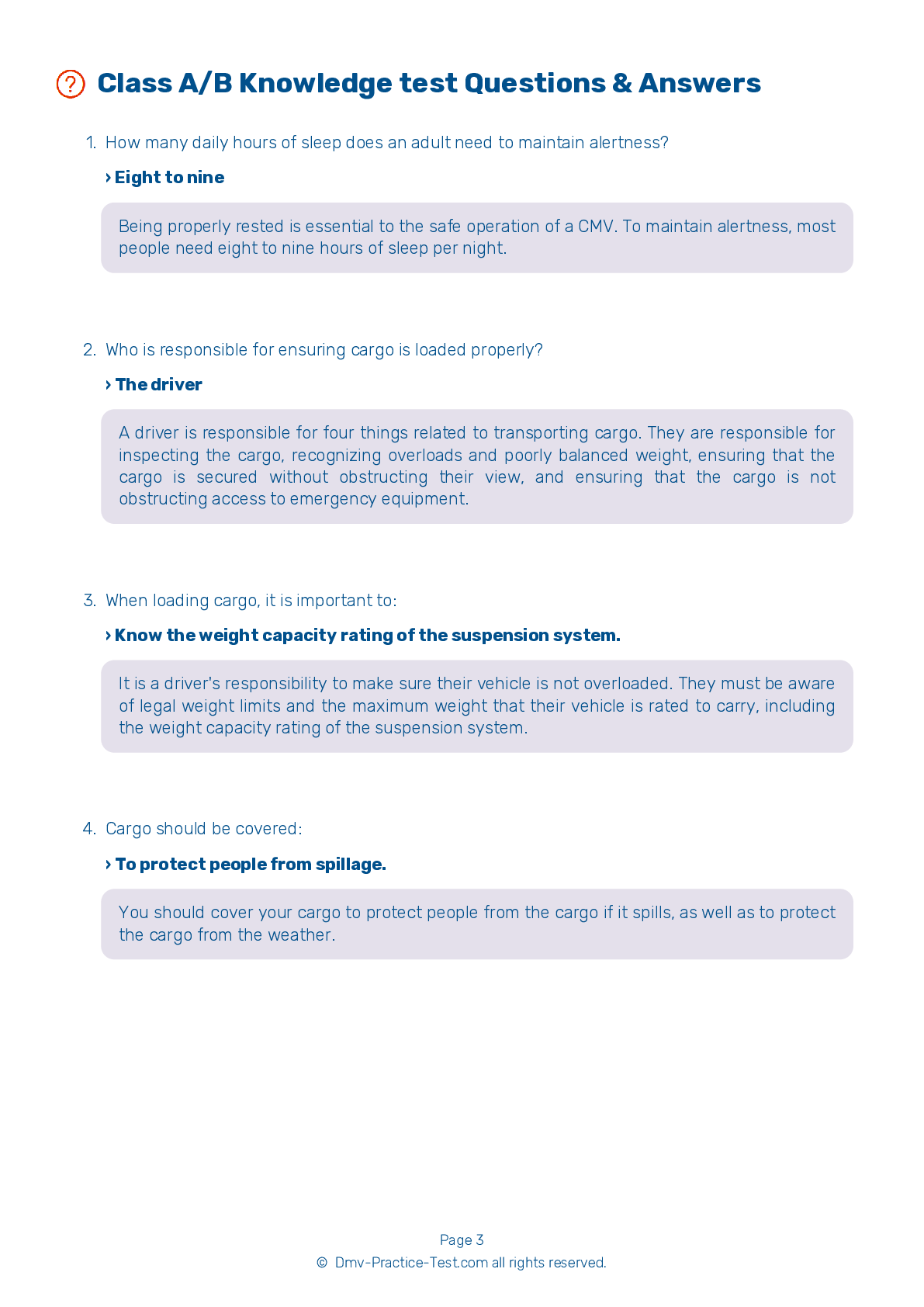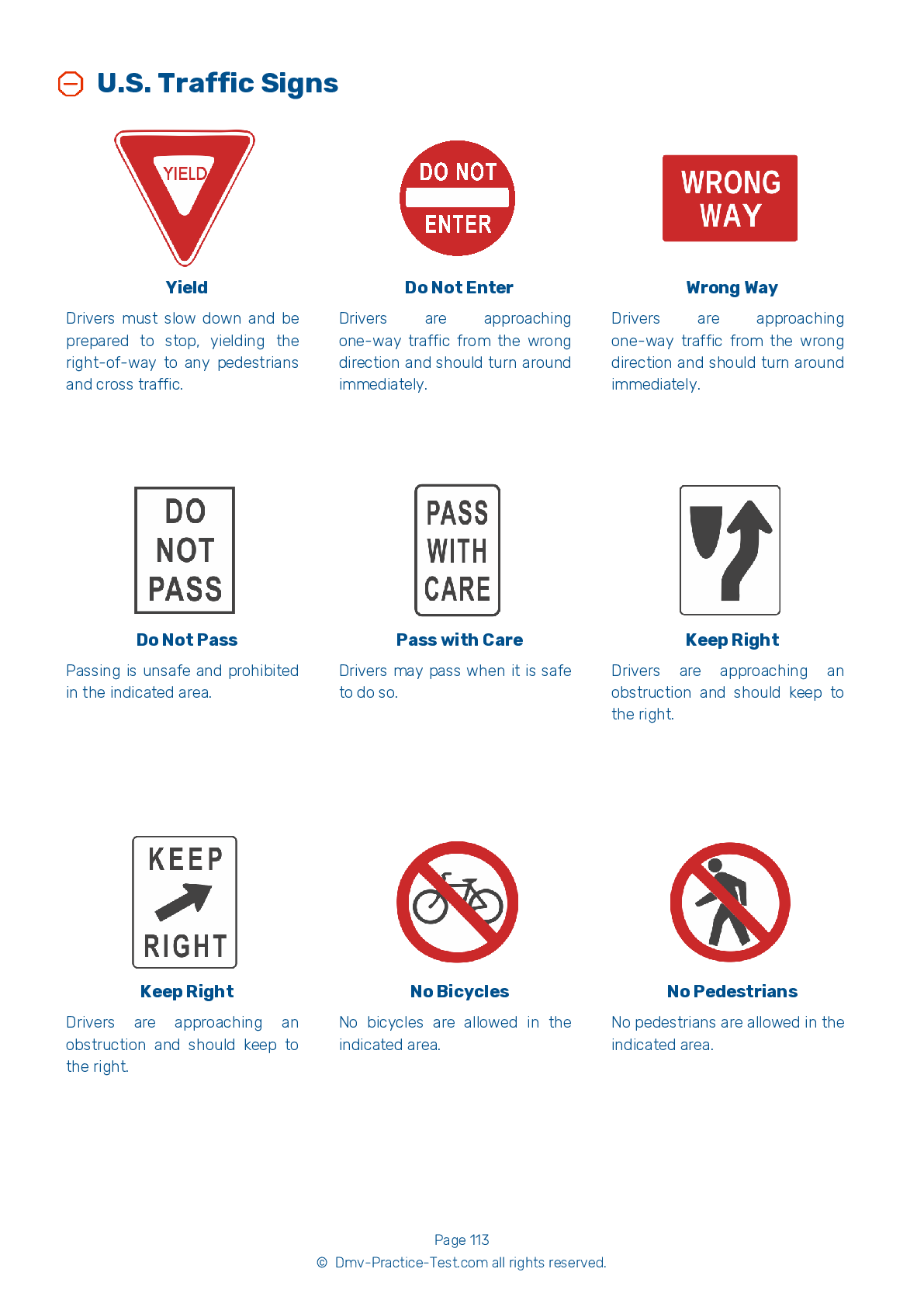Class B Driving Test | Vermont 2025 #2 Page 6 of 7
Train for FREE online with our Vermont class B license test. The official exam test consists of several obligatory parts, with all of them checking your knowledge of different blocks of road rules. If you need to obtain a VT CDL class B permit in 2025, practice as much as possible. Free sample tests published on our website will help you check and improve your knowledge and boost your grades. Please bear in mind that CDL class B requirements may vary from state to state.
36 . When adjusting your mirrors before a trip:
When properly adjusted, your mirrors should each display some part of your vehicle. Being able to see your own vehicle in your mirrors will give you a point of reference when judging the positions of other objects.
37 . Items on a flatbed:
On flatbed trailers and trailers without sides, cargo must be tied down to prevent it from shifting or falling off in transit.
38 . The center of gravity in a trailer should be:
The weight of cargo in a vehicle should be distributed as low as possible. Having a center of gravity that is too high will increase the risk of a rollover.
39 . When checking tires, which of the following should not cause concern?
When checking the tires as part of a pre-trip inspection, make sure the tires have sufficient tread. There should be at least 4/32 of an inch of tread in every major groove of the front tires, and at least 2/32 of an inch of tread depth on the other tires. Tires should not be mismatched in size and radial and bias-ply tires should not be used together.
40 . How long must an applicant hold a Commercial Learner’s Permit (CLP) before taking the road test?
You must have a Commercial Learner's Permit (CLP) for a minimum of 14 days before you can take the CDL skills test. A CLP will be valid for 180 days.
41 . If an applicant does not receive an air brakes endorsement:
If you wish to be licensed to drive a CMV with air brakes, you must pass the air brakes knowledge test and use a vehicle with air brakes for your skills test.
42 . Which of the following is not a reason to cover cargo?
The two basic reasons to cover cargo are to protect people from the cargo if it spills and to protect the cargo from weather conditions.
See the exact questions that will be on the 2025 Vermont DMV exam.
99.2% of people who use the cheat sheet pass the FIRST TIME
Lillian MCcranie explains how our CDL study guide was helpful in passing the exam and recommends it to everyone.
Cameron tells us how he purchased the CDL exam, and found it to be a useful tool which helped him pass the exam and find a job.



